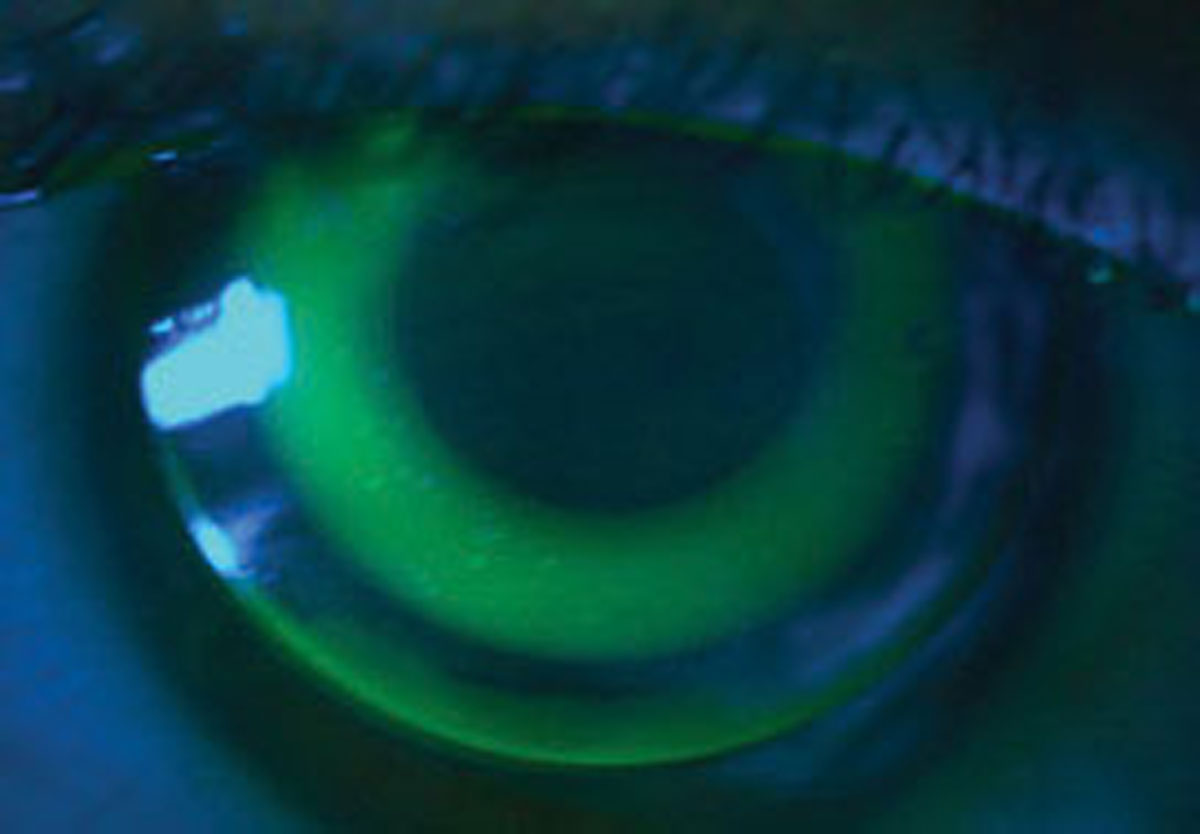 |
| Treating young myopic patients with a combination of orthokeratology and atropine drops may produce positive outcomes in controlling progression. Photo: Julie Tyler, OD, and Heidi Wagner, OD, MPH. Click image to enlarge. |
Atropine and orthokeratology have both proven to be effective in myopia management, with the former reducing disease progression and the later reducing axial elongation. Combination therapy has been suggested as an approach to improve treatment efficacy. Researchers recently investigated whether combining 0.01% atropine with orthokeratology has a better effect on slowing axial elongation compared with orthokeratology alone over two years.
A total of 96 myopic Chinese children ages six to 11 were randomized into either an atropine/orthokeratology combination group or an orthokeratology only group in a 1:1 ratio. Axial length (primary outcome) and pupil size and choroidal thickness (secondary outcomes) were measured at one- and six-month intervals after commencement of treatment.
The study showed an additive effect in reducing axial elongation when 0.01% atropine was used with orthokeratology. For those who completed the two-year study, end axial length was 0.18mm shorter in participants receiving the combined treatment compared with those using orthokeratology alone. Slower axial elongation was associated with a larger increase in the photopic pupil size and a greater thickening in the choroid, which may contribute to the enhanced effectiveness of combination therapy in myopia control, the investigators suggested. They noted that while axial shortening may be due in part to choroidal thickening, it was not a direct result.
“Over two years, with mean axial elongations of 0.17mm and 0.35mm in the atropine with orthokeratology and orthokeratology alone groups, respectively, the between-group difference in choroidal thickness changes were negligible,” they explained. “Therefore, it is unlikely that the between-group difference in changes of choroidal thickness had a major contribution to the additive effect of combined treatment in retarding axial elongation over two years.”
Tan Q, Ng ALK, Cheng GPM, et al. Combined 0.01 atropine with orthokeratology in childhood myopia control (AOK) study: a 2-year randomized clinical trial. Cont Lens Anterior Eye. May 26, 2022. [Epub ahead of print]. |


